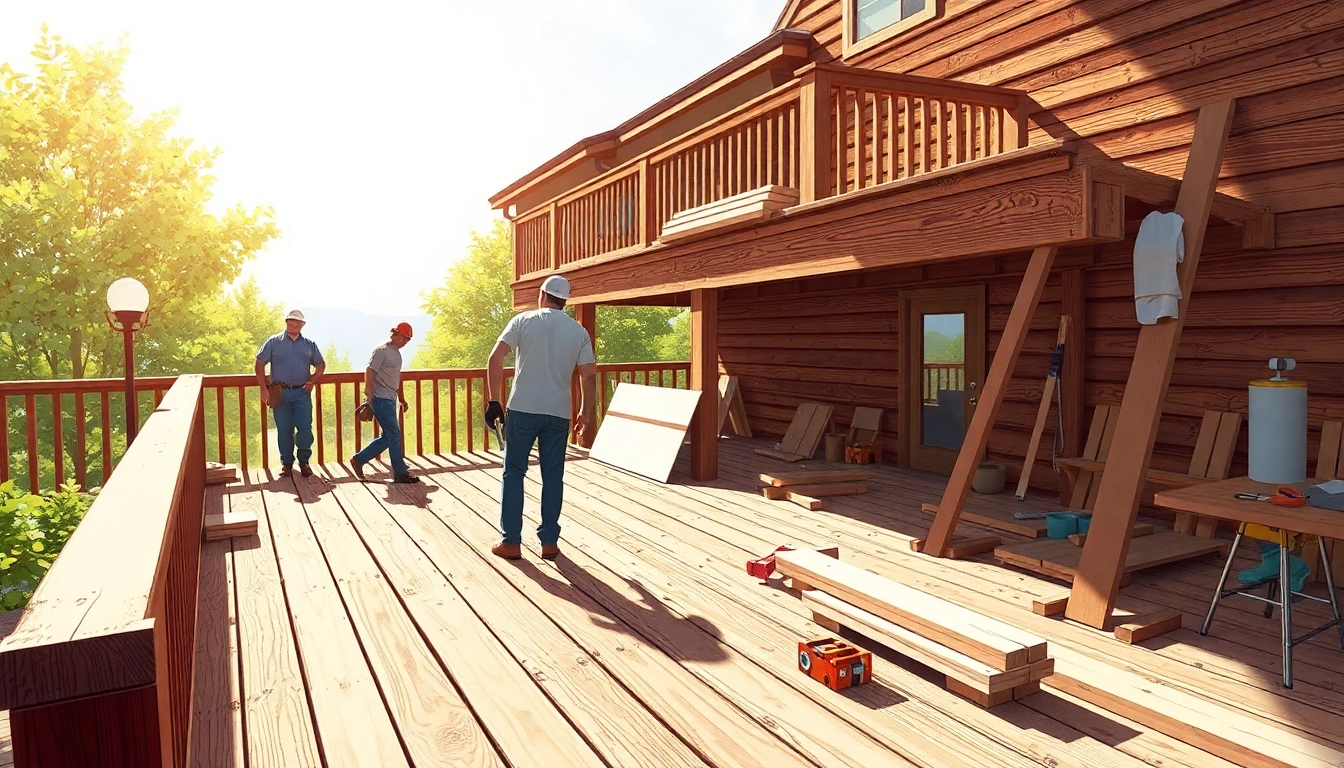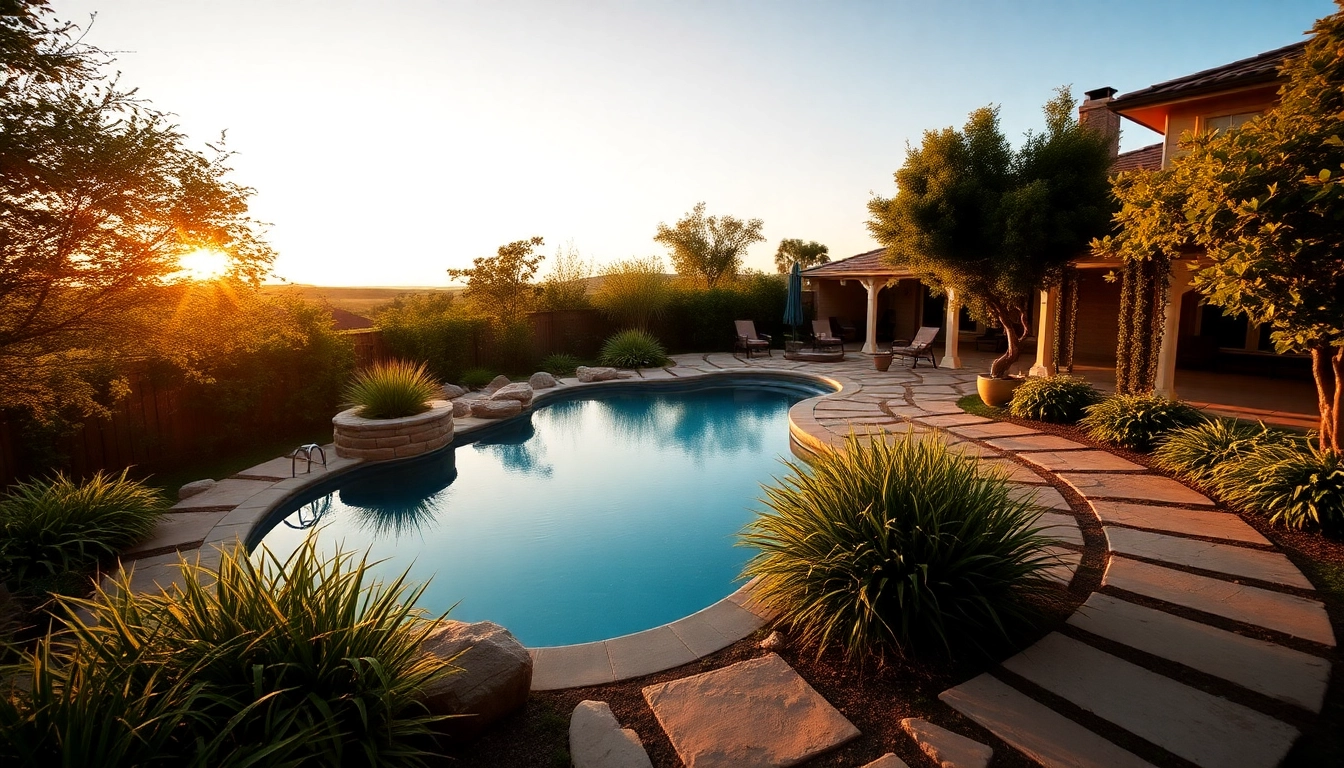Understanding Deck Construction Basics
Deck construction is a significant aspect of any home improvement project. A well-built deck not only enhances outdoor living space but also increases property value. Whether you’re a seasoned builder or a novice DIYer, grasping fundamental concepts and best practices in deck construction is essential for success.
What is Deck Construction?
Deck construction refers to the process of designing and building a structure that extends from a home or building, predominantly made of various materials such as wood, composite, or PVC. Decks can serve multiple purposes: they may offer a space for social gatherings, a foundation for outdoor furniture, or act as a bridge between indoor living and nature. Understanding the structural integrity and aesthetics of deck construction is crucial for creating a functional and durable outdoor space.
Key Materials for Deck Construction
Selecting the right materials is one of the most critical decisions in deck construction. Here are some common materials:
- Wood: Traditional timber such as pressure-treated pine, cedar, or redwood is popular for its natural beauty and workability. However, wood requires regular maintenance to prevent rotting and weather damage.
- Composite: Made from a mixture of wood fibers and plastic, composite decking is low-maintenance and resistant to rot, making it a great option for busy homeowners.
- PVC: PVC decking is composed entirely of plastic, offering durability and resistance to mold, mildew, and staining. It has a more synthetic appearance but is very easy to clean.
- Aluminum: For a modern and industrial look, aluminum decking is lightweight, durable, and resistant to corrosion, but it can be more expensive than other materials.
Common Deck Construction Terminology
To navigate the world of deck construction effectively, familiarity with essential terms is vital:
- Ledger Board: This is the board attached to the house, which serves to support the connection between the house and the deck.
- Joists: These are the horizontal beams that provide support for the deck surface, spaced at regular intervals.
- Footings: Concrete bases that support the vertical posts, ensuring stability and weight distribution.
- Railing: Safety barriers surrounding the deck that can also enhance aesthetics.
Step-by-Step Guide to Building a Deck
Planning Your Deck Construction Project
Successful deck construction begins with thorough planning. Consider the following steps:
- Define the Purpose: Determine how you will use the deck, e.g., entertaining, dining, or relaxing.
- Select the Location: Assess sunlight, shade, accessibility, and privacy when deciding on a location.
- Design the Layout: Sketch designs that include dimensions, shapes, and features to maximize space.
- Check Local Regulations: Verify zoning laws and obtain necessary permits before beginning construction.
Tools Needed for Deck Construction
Having the right tools on hand is crucial for efficient deck construction:
- Measuring Tape: Essential for accurate measurements.
- Power Drill: Needed for driving screws and creating holes.
- Saw: Either a circular saw or miter saw for cutting materials.
- Level: To ensure all structures are even and stable.
- Safety Gear: Gloves, goggles, and a hard hat to protect against hazards during construction.
Executing the Deck Construction Process
With a detailed plan and necessary tools, follow these steps for a smooth construction process:
- Prepare the Site: Clear the construction area of debris and ensure the ground is level.
- Lay the Footings: Dig footings according to the depth specified by local codes and pour concrete.
- Attach the Ledger Board: Securely fasten the ledger board to the house.
- Install Posts and Beams: Erect vertical posts, then connect them with horizontal beams for support.
- Attach Joists: Install joists perpendicular to the beams to hold the decking material.
- Install Decking Boards: Lay down decking boards, fastening them securely to the joists.
- Add Railings: Install railing for safety, ensuring it meets local regulations.
- Finish Touches: Sand rough edges, apply finishes, and clean up the workspace.
Deck Construction Best Practices
Choosing the Right Location
The deck’s location can significantly impact its usability and enjoyment. Consider proximity to indoor areas, views, shade from trees, and the orientation towards sunlight when selecting a site.
Understanding Local Building Codes
Each region has specific building codes that govern deck construction. Adhering to these codes ensures safety and can affect insurance considerations. Always check with local authorities for up-to-date regulations prior to beginning construction.
Maintenance Tips for Long-Lasting Decks
To maintain your deck’s appearance and structural integrity, consider the following:
- Regular Cleaning: Remove debris, dirt, and mold by washing the surface periodically.
- Sealing and Staining: Apply sealants or stains every few years to protect the wood and enhance its appearance.
- Inspect for Damage: Regularly check for signs of wear, rot, or insect damage and address issues promptly.
Clever Deck Construction Ideas
Innovative Deck Designs to Consider
When considering deck designs, think beyond the traditional rectangle. Explore innovative ideas like multi-level decks, built-in seating, or integrated planters that can offer functional and aesthetic value.
Eco-Friendly Materials for Deck Construction
Many homeowners are leaning towards sustainable materials that are both environmentally friendly and aesthetically pleasing. Consider options such as reclaimed wood, recycled plastic composite materials, or sustainably sourced timber to reduce environmental impact.
Enhancing Your Deck with Accessories
Accessories can transform a simple deck into an inviting outdoor living space. Consider adding:
- Outdoor Furniture: Comfortable seating and dining options elevate the usability of your deck.
- Lighting: Incorporate ambient lighting fixtures to extend enjoyment into the evening.
- Outdoor Kitchens: For the culinary-minded, a built-in grill or kitchen setup can create a fantastic entertainment area.
Cost Considerations in Deck Construction
Estimating Your Deck Construction Budget
Budgeting is critical for a successful deck project. Assess costs associated with materials, labor (if hiring), permits, and any additional features you plan to incorporate.
Factors Affecting Deck Construction Costs
The final cost of deck construction can vary dramatically based on factors such as:
- Deck Size: Larger decks naturally require more materials and labor.
- Material Selection: Different materials range in price dramatically and affect overall costs.
- Design Complexity: Intricate designs will increase both material and labor costs due to the extra work involved.
Financing Options for Deck Construction Projects
For those needing additional financial flexibility, several options are available:
- Home Equity Loans: Leveraging your home’s equity can provide needed funds for construction.
- Personal Loans: Consider personal loans for smaller projects or if traditional home equity options are unavailable.
- Credit Cards: For smaller expenditures, but be cautious of interest rates and repayment terms.


